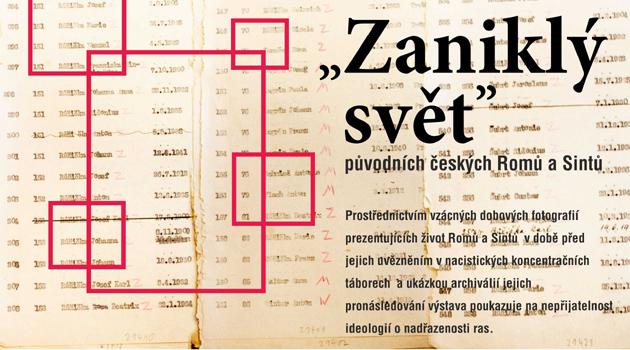Outdoor travelling exhibition about indigenous Czech Roma and Sinti victims of the Holocaust on view in Prague

The Committee for the Redress of the Roma Holocaust (Výbor pro odškodnění romského holocaustu – VPORH) has designed a travelling exhibition called “A Vanished World” (Zaniklý svět), about the indigenous Czech Roma and Sinti who perished during the Holocaust, which now will be on view in several locations throughout Prague from April through October. Using rare archival materials and photographs, the exhibition presents the life of Roma and Sinti in the Czech lands prior to their imprisonment in the Nazi concentration camps.
Today the exhibition of three double-sided panels will be on view in the public spaces in front of the Rajská zahrada metro station, moving to the Černý most metro station on 26 April. On 12 May it will travel to the memorial at the site of the former concentration camp for Romani people at Lety u Písku, where it will be available for viewing during the commemorative ceremony there on Saturday, 13 May.
In June the exhibition will be part of the Kaleidoskop Festival, which will be held in the park in the Pankrác quarter. “Passers-by will be able to familiarize themselves with what the life of Romani people looked like prior to the Second World War. They will see Romani people proudly posing for photographs in front of their caravans. They can then form their own notions about these people, who were almost completely murdered off here just because the Nazis espoused their ideology of racial superiority,” the chair of the VPORH, Čeněk Růžička, told news server Romea.cz.
“The exhibition shows archival materials and photographs that have been exhibited during its previous tours, but I have augmented it with new materials that startled me when I found them. For example, the Interior Ministry of the Protectorate of Bohemia and Moravia published its own stance on how the camps were to be run. I believe these materials might further change the assessment of the events that played out at Hodonín u Kunštátu and Lety u Písku,” he said.
When creating the exhibition the authors were inspired by the approach taken by the Jewish community toward discussing the Holocaust. “We wanted to speak openly about the events of the Second World War as they happened. I am aware that in this country that requires a bit of courage,” Růžička said, “but I believe that when ordinary people stop by these panels. they cannot remain unaffected by what they read and see.”